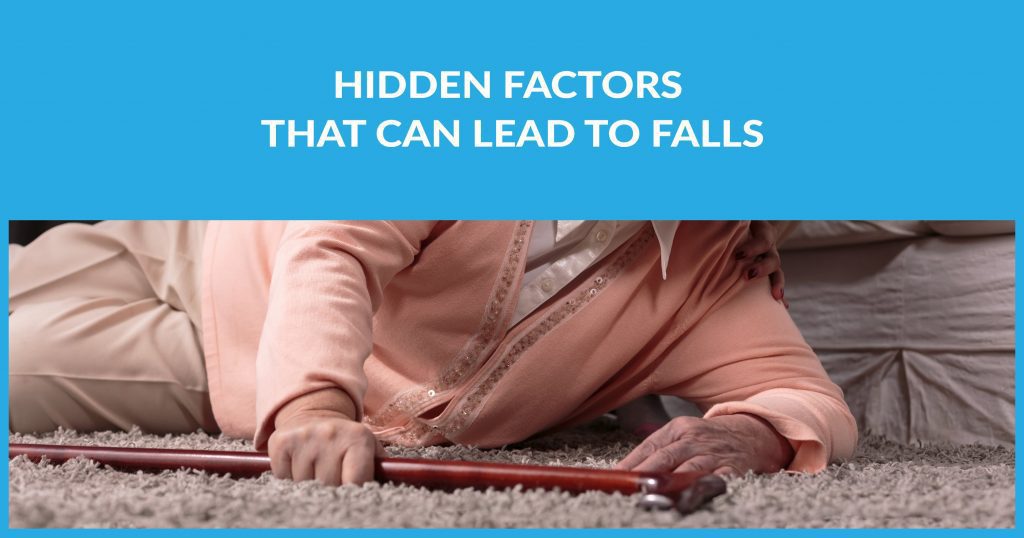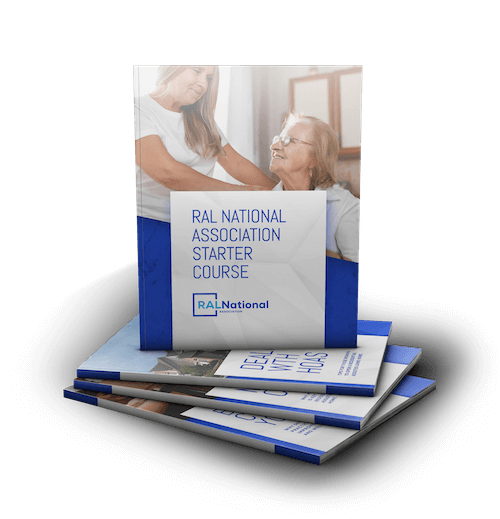[vc_row css_animation=”” row_type=”row” use_row_as_full_screen_section=”no” type=”full_width” angled_section=”no” text_align=”left” background_image_as_pattern=”without_pattern”][vc_column][vc_empty_space][vc_column_text]
Do you realize that educating residential assisted living caregivers on fall risks could significantly impact the quality of life for seniors?
[/vc_column_text][vc_empty_space height=”16px”][vc_column_text]Avoiding falls in assisted living homes can be life-altering, this is why it is critically important to educate senior living caregivers about the hidden factors that lead to falls. According to the U.S. Centers for Disease Control and Prevention:[/vc_column_text][vc_empty_space height=”16px”][vc_column_text]
- One in four Americans aged 65+ fall each year.
- Every 11 seconds, an older adult is treated in the emergency room for a fall; every 19 minutes, an older adult dies from a fall.
- Falls are the leading cause of fatal injury and the most common cause of nonfatal trauma-related hospital admissions among older adults.
- Falls result in more than 2.8 million injuries treated in emergency departments annually, including over 800,000 hospitalizations and more than 27,000 deaths. Here is some More Info on getting legal help.
- In 2015, the total cost of fall injuries was $50 billion. Medicare and Medicaid shouldered 75% of these costs.
- The financial toll for older adults who fall is expected to increase as the population ages and may reach $67.7 billion by 2020.
[/vc_column_text][vc_empty_space height=”16px”][vc_column_text]It is evident that falls are the leading cause of fatal and non-fatal injuries for older people. They put the independence of seniors in jeopardy and generate huge health expenses. However, falling is not an inevitable result of aging – it can be avoided – precautions can be taken. There are many evidence-based fall prevention programs that help reduce the number of senior falls substantially.[/vc_column_text][vc_empty_space height=”16px”][vc_column_text]Falls, with or without injury (learn more from this source), also carry a serious quality of life impact. Many seniors who fear falling limit their physical activities and social engagements, which leads to further physical decline. As a result, these seniors suffer from depression, social isolation, and feelings of helplessness. Do you realize that educating residential assisted living caregivers on fall risks could significantly impact the quality of life for seniors? Assisted living caregivers can change the lifestyles of seniors tremendously when they are equipped with the right information to stay on top of fall risks.[/vc_column_text][vc_empty_space height=”16px”][vc_column_text]
4 COMPONENTS CAREGIVERS SHOULD CONSIDER
[/vc_column_text][vc_empty_space height=”16px”][vc_column_text]
1. Eye Issues:
[/vc_column_text][vc_empty_space height=”16px”][vc_column_text]Always make sure eyeglasses maintain up-to-date prescriptions to prevent vision problems. Otherwise, objects can become fuzzy and out of focus. Be mindful the tint changing lenses can be hazardous for seniors. In addition, bifocal glasses, cataracts, and other macular degeneration cause concerns that require additional monitoring in assisted living homes.[/vc_column_text][vc_empty_space height=”16px”][vc_column_text]
2. Balance:
[/vc_column_text][vc_empty_space height=”16px”][vc_column_text]Balance deteriorates with aging. It’s important to test a resident’s balance frequently. Encouraging seniors to participate in strength training that includes balance exercises help. Take notice of seniors who tend to hold onto walls, furniture, or people when walking. These are signs that seniors have difficulty with balance and should be monitored more frequently when rising from a chair or walking.[/vc_column_text][vc_empty_space height=”16px”][vc_column_text]
3. Health conditions:
[/vc_column_text][vc_empty_space height=”16px”][vc_column_text]There are several health conditions that create increased fall risks. Cardiac and pulmonary issues, including hypertension, congestive heart failure and chronic obstructive pulmonary disease (COPD) can create significant issues. These heart conditions often make seniors incapable of exercising. Heart conditions also cause less oxygen to get to the brain which causes a sudden drop in blood pressure. It is important for caregivers to familiarize themselves with the resident’s medical conditions that cause seniors to be more likely to fall.[/vc_column_text][vc_empty_space height=”16px”][vc_column_text]
4. Medications:
[/vc_column_text][vc_empty_space height=”16px”][vc_column_text]Mismanagement of medications is common. Residential assisted living home caregivers must understand that medication intake errors can impair balance. Automated medication distribution ensures a correct dosage, but medications can still create unwanted reactions when combined with certain foods. Non-prescription medications can cause the same negative effects. These effects can lead to an imbalance due to dizziness. As a result, caregivers should especially monitor and assist seniors on medications.[/vc_column_text][vc_empty_space height=”16px”][vc_column_text]Many people think falls are a normal part of aging. The truth is, they are not. Remember, most falls can be prevented, and residential assisted living caregivers have the ability to reduce the risks when properly equipped with the right resources. To promote greater awareness and understanding about fall risks, it is important to debunk common myths about falls amongst older people.[/vc_column_text][vc_empty_space height=”16px”][vc_column_text]
10 Myths About Falls Amongst Seniors
[/vc_column_text][vc_empty_space height=”16px”][vc_column_text]
- Many people think, “It won’t happen to me,” but 1 in 4 older adults fall annually.
- Falling is not a normal part of aging. You can take steps you can take to prevent a fall.
- Performing physical activities promotes independence, strength, range of motion and social activities are good for your overall health.
- Inspect your home for fall risks, because over half of all falls take place at home.
- While we do lose muscle as we age, exercise can partially restore strength and flexibility. It’s never too late to start an exercise program.
- Taking any medication may increase your risk of falling.
- Vision is a serious key risk factor for falls. People with vision problems are more than twice as likely to fall.
- Walking aids help, however, have a physical therapist fit the walker or cane to your height and weight and then instruct you about safe usage.
- Consult medical providers, family and caregivers and fall prevention is a team effort.
- There are many things you can do, including removing hazards in the home, finding fall prevention programs or setting up vision exams.
[/vc_column_text][vc_empty_space height=”16px”][vc_column_text]
RALNA OFFERS SAFE PRACTICES FOR SUPPORT SENIOR LIVING
[/vc_column_text][vc_empty_space height=”16px”][vc_column_text]Residential Assisted Living National Association is the largest residential assisted living organization providing resources and support to the residential assisted living industry. Visit www.RALNA.com for additional information.[/vc_column_text][vc_empty_space height=”16px”][vc_column_text]In addition, the membership grants you access to group purchasing power, discounts with over 200 residential assisted living vendors, legal advocacy, industry marketing, educational services, memory care training, certifications, marketing, and relevant newsletters. RALNA is a great place to start gaining routine resources and up-to-date education for your staff.[/vc_column_text][vc_empty_space height=”24px”][vc_column_text]Does your assisted living staff have the resources and education they need to impact the lives of seniors in your residential assisted living home?[/vc_column_text][vc_empty_space][vc_separator css_animation=”fadeIn” type=”normal” color=”#eaeaea”][vc_empty_space][vc_row_inner row_type=”row” type=”full_width” text_align=”left” css_animation=””][vc_column_inner width=”1/6″][/vc_column_inner][vc_column_inner width=”2/3″][vc_single_image image=”99″ img_size=”medium” alignment=”center” qode_css_animation=””][vc_empty_space height=”10px”][vc_column_text]
If you found the information on this article valuable, you’ll find enormous benefits by becoming a member of our community. Visit this page to become a RALNA Member.
[/vc_column_text][/vc_column_inner][vc_column_inner width=”1/6″][/vc_column_inner][/vc_row_inner][vc_empty_space][/vc_column][/vc_row]











